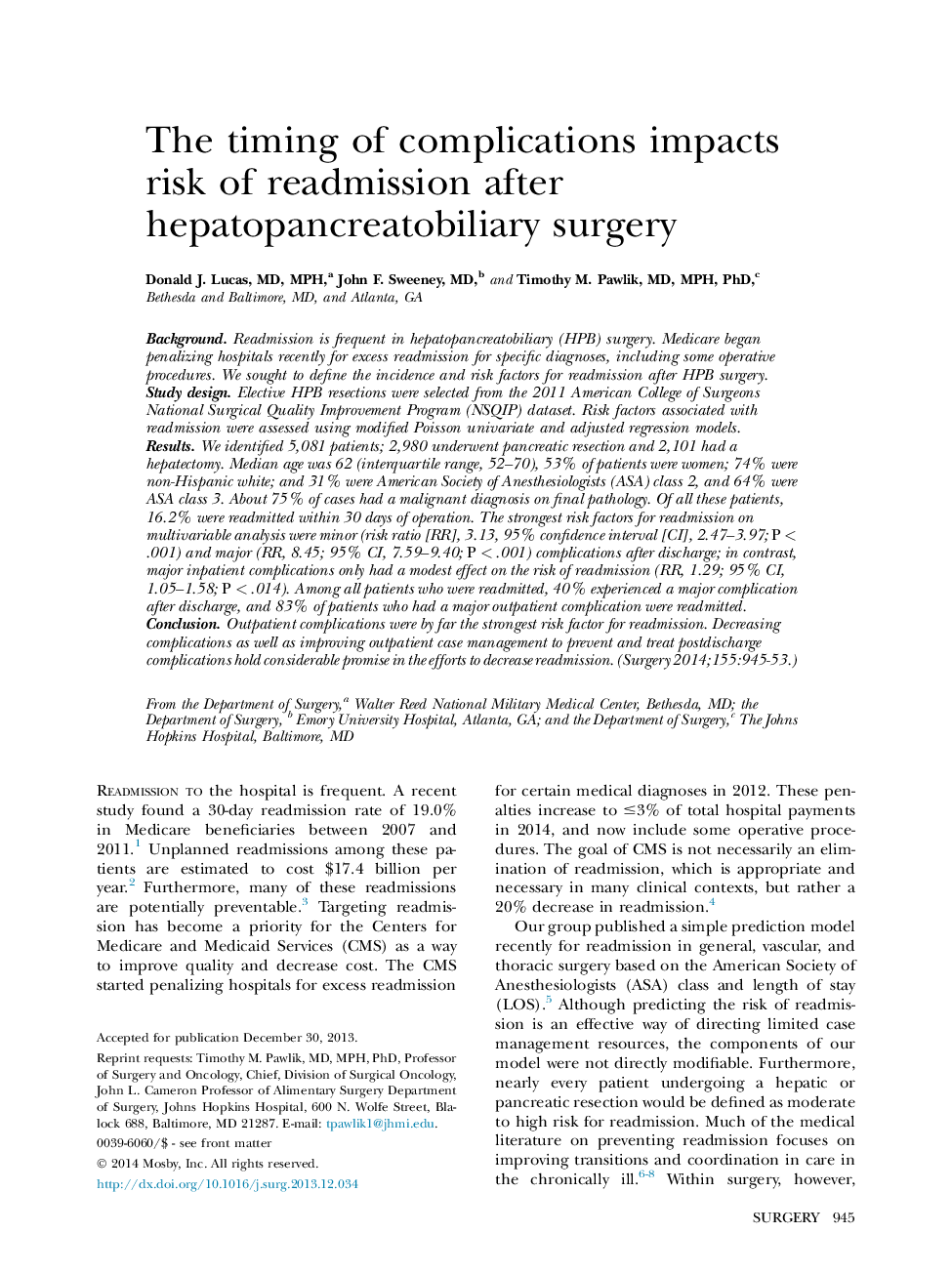| Article ID | Journal | Published Year | Pages | File Type |
|---|---|---|---|---|
| 4306552 | Surgery | 2014 | 9 Pages |
BackgroundReadmission is frequent in hepatopancreatobiliary (HPB) surgery. Medicare began penalizing hospitals recently for excess readmission for specific diagnoses, including some operative procedures. We sought to define the incidence and risk factors for readmission after HPB surgery.Study designElective HPB resections were selected from the 2011 American College of Surgeons National Surgical Quality Improvement Program (NSQIP) dataset. Risk factors associated with readmission were assessed using modified Poisson univariate and adjusted regression models.ResultsWe identified 5,081 patients; 2,980 underwent pancreatic resection and 2,101 had a hepatectomy. Median age was 62 (interquartile range, 52–70), 53% of patients were women; 74% were non-Hispanic white; and 31% were American Society of Anesthesiologists (ASA) class 2, and 64% were ASA class 3. About 75% of cases had a malignant diagnosis on final pathology. Of all these patients, 16.2% were readmitted within 30 days of operation. The strongest risk factors for readmission on multivariable analysis were minor (risk ratio [RR], 3.13, 95% confidence interval [CI], 2.47–3.97; P < .001) and major (RR, 8.45; 95% CI, 7.59–9.40; P < .001) complications after discharge; in contrast, major inpatient complications only had a modest effect on the risk of readmission (RR, 1.29; 95% CI, 1.05–1.58; P < .014). Among all patients who were readmitted, 40% experienced a major complication after discharge, and 83% of patients who had a major outpatient complication were readmitted.ConclusionOutpatient complications were by far the strongest risk factor for readmission. Decreasing complications as well as improving outpatient case management to prevent and treat postdischarge complications hold considerable promise in the efforts to decrease readmission.
